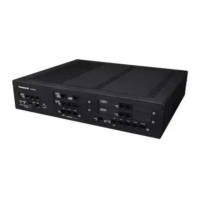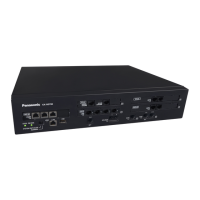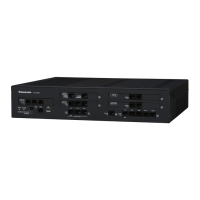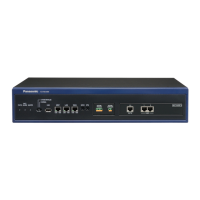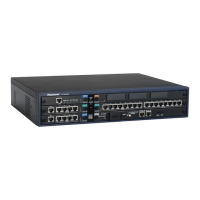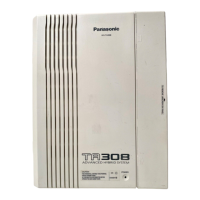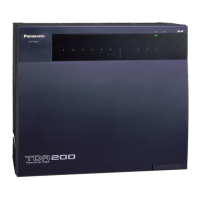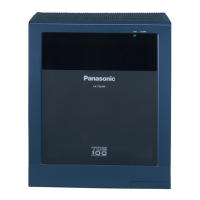4.3.2.3 Call Distribution Port Group
Description
It is possible to set which virtual port receives each call depending on the telephone number of the called party.
By assigning each port to a Call Distribution Port Group (CDPG), it is possible to select which group receives
each call. CDPG settings cover all V-IPGW cards in the PBX, which allows for ports on different cards to be
assigned to the same CDPG. In other words, two 8-port cards can be used as one 16-port card.
Programming Example:
To enable this feature, it is necessary to programme the following 2 tables through system programming:
• CDPG Table
- in order to assign ports to Call Distribution Port Groups.
• Hunt Pattern Table
- in order to programme a priority list of CDPG destinations for each leading number.
[Programming Example of the CDPG Table]
V-IPGW Card Number Port Number Call Distribution Port Group
*1
1 1 CDPG 1
1 2 CDPG 2
1 : :
1 8 CDPG 2
2 1 CDPG 1
2 : :
2 8 CDPG 3
*1
® 9.12 PBX Configuration—[1-1] Configuration
—Slot—Port Property—V-IPGW—
Call Distribution Port Group
[Programming Example of the Hunt Pattern Table]
No.
Leading
Number
*1
Call Distribution Port
Group (1st)
*2
Call Distribution Port
Group (2nd)
*2
…
Call Distribution Port
Group (16th)
*2
1 10 CDPG 1 CDPG 4 … -
2 20 CDPG 1 CDPG 2 … CDPG 3
: : : : … :
32 300 CDPG 8 CDPG 11 … -
*1
®
9.11.2 PBX Configuration—[1-1] Configuration—Slot—Shelf Property—V-IPGW—Hunt Pattern—Hunt Pattern 1–16—
Leading
Number
*2
® 9.11.2 PBX Configuration—[1-1] Configuration
—Slot—Shelf Property—V-IPGW—Hunt Pattern—Hunt Pattern 1–16—
Call
Distribution Port Group—1st–
16th
Note
The same CDPG can be set for several leading numbers.
434 Feature Guide
4.3.2 Voice over Internet Protocol (VoIP) Network
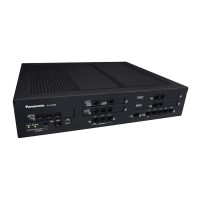
